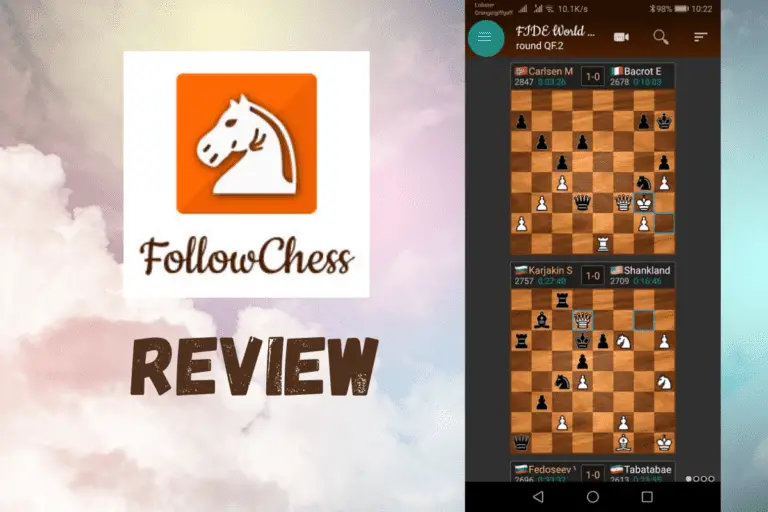The Queen’s Pawn Opening: 1. d4 and Its Many Advantages
⭐⭐⭐ Take 6 minutes to read and improve your chess game ➡️ : This article was first published on, and is Copyright of Chessquestions.com
The Queen’s pawn opening, 1 d4 is the second most popular opening in chess right after 1.e4, and it’s one of my personal favorites because I get a lot of flexibility. It can be used to start an attack or as a methodical way to develop your pieces and make sure you’re solid before going on the offensive.
It is the most popular opening for one of the greatest Grandmasters, Garry Kasparov, and utilized most frequently by other elite grandmasters like Levon Aronian, Shakriyat Mamedyarov, and Vladimir Kramnik
Mamedyarov is such a fan, the Azerbaijani has made the Queen’s Pawn Opening move 1. d4 in over 80% of his games when playing white pieces making the first move in chess games.

What is the Queen’s pawn opening?
The Queen’s pawn opening is one of the most popular and exciting openings in all of chess! It starts with the move 1.d4, putting a pawn in the center and controlling the important e5-square. There are many different lines and openings that arise from d4, so it’s a great way to start your game if you want to be unpredictable!
The QPG has a long and rich history. It was extensively studied by the world’s best players in the 19th century, including Philidor, Anderssen, Morphy, Steinitz and Lasker. These players developed many different lines and openings that are still played today.
- With a pawn that can’t be readily opposed, you gain room in the middle.
- Retention of the pawn extends central pressure
- 1.d4 is considered more methodical and strategic development than 1.e4
The Queen’s Pawn opening refers to any opening beginning with 1 d4, from there, there are a whole host of ways things can progress.
Queen’s Pawn Opening Tactics and Strategies
The Queen’s pawn opening is defined only by the first move of 1. d4, beyond that there is so much more that can happen as we shall see.
The table below outlines the range of openings that transpire depending on how each side plays. They are the most common occurrences of the result of the queen’s pawn first move.

What to do after 1 d4 when playing Black pieces.
This is a list of potential responses from black and how they are referred to in the Encyclopedia of Chess Openings (ECO) – I present them in order of preference from over 1 million master games on chess.com which can be analyzed here.
While this list numbers all of the 20 possibilities, the top 7 account for 99.33% of all master’s responses, so it would be adventurous, to say the least, to look outside of these options.
| Black’s Response | Frequency** | % Of Games |
|---|---|---|
| 1…Nf6 | 624,094 | 59.44% |
| 1…d5 | 264,094 | 25.17% |
| 1…e6 | 47,288 | 4.50% |
| 1…d6 | 32,171 | 3.06% |
| 1…f5 | 31,646 | 3.01% |
| 1…g6 | 30,155 | 2.87% |
| 1…c5 | 13,343 | 1.27% |
| 1…Nc6 | 2,282 | 0.22% |
| 1…c6 | 1,890 | 0.18% |
| 1…b6 | 1,280 | 0.12% |
| 1…b5 | 965 | 0.09% |
| 1…e5 | 285 | 0.03% |
| 1…a6 | 190 | 0.02% |
| 1…Na6 | 60 | 0.01% |
| 1…h6 | 49 | 0.005% |
| 1…f6 | 16 | 0.002% |
| 1…h5 | 14 | 0.001% |
| 1…g5 | 7 | 0.0007% |
| 1…a5 | 7 | 0.0007% |
| 1…Nh6 | 1 | 0.0001% |
What Are the Openings Called?
- 1…Nf6 Indian Game
- 1…d5 (Leads to 2 c4 Queens Gambit)
- 1…e6 Horwitz Defense/Semi Slav
- 1…d6 (Leads to 2. e4 Pirc Defense)
- 1…f5 Dutch Defense
- 1…g6 Modern Defence
- 1…c5 Old Benoni Defense
Black playing Nf6 or d5 in response to the Queen’s Pawn opening contributes over 84.6% of all first moves for black after 1 d4.
It is recommended to learn some theory for this and lines for either accepting or declining the Queen’s gambit with the black pieces.
The Horwitz Defence can be an interesting option for black and will turn quickly into the french defense normal variation as white moves 2. e4
1…Nf6 Indian Game
Nf6 in response to the Queen’s Pawn Opening immediately attacks the center with a Knight for the Indian game instead of developing a pawn. This is the most popular response by far with 59.44% of the million or so games in the database played by masters.
There are a swathe of possibilities from here with the Grünfeld, Nimzo Indian and Benoni, but there are many other options. Just be aware that whichever way this goes, white is looking for a slower game of development and will have a very strategic plan up their sleeve.
1…d5 (Leads to 2 c4 Queens Gambit)
Reciprocating the Queen’s pawn is played around 25% of the time and invites the Queen’s Gambit, should white wish to go down this route.
In 72% of games, you’ll find it offered, not because they are Netflix fans but because it prevents white from playing 2. e4, and taking full control of the center.
Accepting the Gambit is the most frequent outcome (2…dxc4), whilst if you follow engine advice you’ll probably decline with 2…e6 – You will end up losing the pawn on c4 in time though, so that gambit is not a giveaway for white.
1…e6 Horwitz Defense/Semi Slav
e6 is played in response to 1 d4 only in 5% of games but deserves a mention. This is a good move for Black as you keep your cards close to your chest and let white have some central advantage and play their hand openly.
Expect 2. e4 transposing to the French Defense
Why Play The Queen’s Pawn Opening Over Other Openings?
The Queen’s Pawn opening is favored by players who are approaching the game in a less aggressive manner. Some would argue it is more methodical than 1. e4 and offers more strategy development, something that will be discussed, argued and disagreed with for all time but certainly, when playing it feels a little slower and a little more cautious in most lines.
That said, if white wants to be more aggressive the QPG doesn’t restrict it. Indeed after building that solid line the Slav defense will be more active than others.
Take the Trompowsky Attack for instance, it is not called ‘Attack’ for no reason, an early trade and disrupting black’s pawn structure can lead into some wild stuff from black who might be taken aback. It is why it is such a popular Blitz game choice for white.

Even the Queen’s Gambit in the closed d5 response from black is not a real gambit as the pawn can be rapidly recaptured to equalize.
The key to 1 d4 is that the pawn is not readily opposable and grabs quick control over the e5 square and the longer that control is maintained with the retention of the queen’s pawn, so long as it is not isolated, the more the central pressure will build into the middle game and trades.
Is the Queens Pawn Game Good for Beginners?
The Queens Pawn Opening is a good place to start for beginners. Yes Bobby Fischer didn’t like it, Yes Magnus plays it less than 1. e4 (but he can do what he likes!)
What you get by studying 1.e4 openings as a beginner is not smashed to smithereens in 5 moves by a better player. The very essence of the measured moves in the opening also provides a base to work from and build and recognize the lines for central control, and there are not too many to remember either which is a bonus.
1 e4, is something you will want to spend many studies on in time, but many a coach will encourage this more measured approach to learning your first openings in chess this way.
The Best Way To Learn All About The Queens Pawn Openings
Set up your chess board, either at home or online, and play through some of the openings leading from the Queen’s Pawn first move. Play with both pieces and get a feel of what basic principles you need to apply.
It is easier to set up the analysis board on a chess website and study the possibilities there. You’ll find lessons, videos, and training puzzles based on the openings.
It is simply a matter of putting in the study and putting into practice with trying things out in some games to see how well you retain the memory of what to do next.
I guarantee, if you spend just 40 minutes a day, 5 days a week for one month, you will be a good 1. d4 player by the end of it. You’ll not be a grandmaster of course, but 20 hours of dedicated practice is all it will take for you to be very adept with the Queens Pawn Opening and all its options.






